No products in the cart.
Prolia® (Denosumab Injection)
$598.00
Prolia is a prescription medication used to treat osteoporosis and bone loss in individuals at high risk of fractures. It works by inhibiting bone resorption, helping to maintain and increase bone density. Prolia is administered as a twice-yearly injection and is especially effective for postmenopausal women, men undergoing prostate cancer treatment, and patients with glucocorticoid-induced bone loss. Ask your doctor if Prolia is right for strengthening your bones and reducing the risk of fractures.
Introduction to Osteoporosis and Bone Health
Bone health is a critical aspect of overall well-being, particularly as people age. Bone is a living tissue that constantly undergoes remodeling, a balance between the removal of old bone (resorption) by osteoclasts and the formation of new bone by osteoblasts. In childhood and early adulthood, bone formation typically exceeds resorption, contributing to the growth of bones and increasing bone density. However, as individuals age, particularly after the age of 30, bone resorption begins to outpace formation. This shift can lead to osteopenia (low bone density), and if untreated, it can progress into osteoporosis, a condition characterized by fragile bones that are prone to fracture.
Osteoporosis is a serious health concern affecting millions worldwide, particularly postmenopausal women and elderly men. In the United States alone, it is estimated that more than 54 million adults suffer from osteoporosis or low bone mass, placing them at increased risk for fractures. Hip fractures, for example, are among the most debilitating outcomes of osteoporosis, often resulting in hospitalization, reduced quality of life, and increased mortality rates.
The risk factors for osteoporosis include aging, hormonal imbalances (such as the drop in estrogen after menopause), prolonged use of certain medications (such as glucocorticoids like prednisone), lifestyle factors (like insufficient calcium and vitamin D intake, lack of exercise), and certain medical conditions such as rheumatoid arthritis. Recognizing these risk factors is crucial for early intervention and prevention of fractures, which is where medications like Prolia® (denosumab) come into play.
Prolia® Overview: Mechanism of Action
Prolia is a biologic medication specifically designed to address bone loss by targeting the RANK ligand (Receptor Activator of Nuclear factor Kappa-Β Ligand), a protein essential for the formation, function, and survival of osteoclasts. Osteoclasts are specialized cells that break down bone tissue during the process of bone remodeling. In healthy individuals, there is a balance between the activity of osteoclasts and osteoblasts. However, in individuals with osteoporosis, excessive osteoclast activity can lead to significant bone loss.
Prolia works by binding to and inhibiting the RANK ligand, thereby reducing the formation and activity of osteoclasts. This leads to decreased bone resorption and allows the body to maintain stronger, denser bones. By reducing osteoclast activity, Prolia helps in maintaining bone density and reducing the risk of fractures, particularly in individuals at high risk, such as postmenopausal women, men undergoing androgen deprivation therapy (ADT) for prostate cancer, and individuals receiving glucocorticoids for inflammatory conditions.
Denosumab, the active ingredient in Prolia, is classified as a monoclonal antibody, which is a type of biologic drug that targets specific proteins in the body. It is administered via subcutaneous injection, typically every six months, making it a convenient option for patients compared to daily or weekly oral medications.
Clinical Indications for Prolia®
Prolia is approved for several clinical indications, each addressing specific groups of patients who are at high risk of bone loss or fractures. The following are the key clinical uses of Prolia:
1. Osteoporosis in Postmenopausal Women
One of the most significant applications of Prolia is for the treatment of osteoporosis in postmenopausal women who are at high risk of fractures. The loss of estrogen after menopause accelerates bone resorption, leading to rapid bone loss in women. This makes postmenopausal women particularly vulnerable to vertebral fractures (spinal fractures), hip fractures, and nonvertebral fractures (fractures in other bones, like the wrists or arms).
Clinical trials have demonstrated that Prolia significantly reduces the risk of vertebral, nonvertebral, and hip fractures in postmenopausal women. For example, the FREEDOM trial, one of the largest and most comprehensive studies on Prolia, showed a 68% reduction in the risk of vertebral fractures, a 20% reduction in nonvertebral fractures, and a 40% reduction in hip fractures over a three-year period in postmenopausal women with osteoporosis.
2. Osteoporosis in Men
Osteoporosis is often perceived as a condition affecting mostly women, but men are also susceptible to bone loss, particularly as they age or undergo hormone-related therapies. Prolia is approved for the treatment of osteoporosis in men with a history of osteoporotic fractures or those at high risk for fractures due to multiple risk factors.
In clinical studies involving men, Prolia has been shown to increase bone mineral density (BMD) and reduce the risk of fractures, offering an effective treatment option for men with osteoporosis who may not respond well to other medications like bisphosphonates.
3. Glucocorticoid-Induced Osteoporosis
Long-term use of glucocorticoids, such as prednisone, is associated with significant bone loss and an increased risk of fractures. Glucocorticoids are commonly prescribed for inflammatory and autoimmune conditions, including rheumatoid arthritis, lupus, and asthma. Prolia is approved for the treatment of glucocorticoid-induced osteoporosis in patients who are expected to remain on glucocorticoid therapy for at least six months and who are at high risk of fractures.
Prolia’s ability to preserve bone density and reduce fracture risk makes it an important option for patients on chronic glucocorticoid therapy, especially those who may not tolerate other osteoporosis treatments or who have experienced fractures despite being on other medications.
4. Bone Loss in Cancer Patients
Certain cancer treatments, particularly androgen deprivation therapy (ADT) for prostate cancer and aromatase inhibitor therapy for breast cancer, can lead to significant bone loss. These therapies work by reducing the levels of hormones like testosterone or estrogen, which are essential for maintaining bone density. As a result, patients undergoing these treatments are at increased risk of fractures.
Prolia is approved for the treatment of bone loss in men receiving ADT for prostate cancer and in women receiving aromatase inhibitors for breast cancer. Studies have shown that Prolia increases bone mass and reduces the incidence of vertebral fractures in these patients.
5. Giant Cell Tumor of Bone (GCTB)
Prolia has also been approved for the treatment of giant cell tumor of bone (GCTB), a rare, usually non-cancerous tumor that can destroy normal bone tissue. By blocking the RANK ligand, Prolia helps to slow the growth of these tumors and reduce bone damage.
Dosage and Administration of Prolia®
Prolia is administered via a subcutaneous injection, meaning it is injected under the skin, usually in the upper arm, thigh, or abdomen. The standard dosing schedule for Prolia is one injection every six months, which makes it a convenient option for patients compared to other osteoporosis medications that require daily or weekly dosing.
The injection is typically administered in a medical office or clinic by a healthcare provider, though some patients may be trained to administer the injection themselves at home. In certain situations, such as in patients with cancer-related bone loss, the dosing schedule may be adjusted to meet the specific needs of the patient.
Mechanism of Action: A Deeper Dive
To fully understand how Prolia works, it’s essential to delve into the molecular biology behind its action. The RANK/RANKL/OPG pathway plays a central role in bone remodeling. RANK (Receptor Activator of Nuclear factor Kappa-Β) is a receptor found on osteoclasts and their precursors. When RANK binds to its ligand, RANKL (Receptor Activator of Nuclear factor Kappa-Β Ligand), it stimulates the formation, function, and survival of osteoclasts, leading to increased bone resorption.
In a healthy bone remodeling process, osteoprotegerin (OPG), a decoy receptor, binds to RANKL, preventing it from interacting with RANK and thus inhibiting osteoclast formation. However, in conditions like osteoporosis, the balance is tipped in favor of RANKL, leading to excessive osteoclast activity and bone loss.
Prolia mimics the action of OPG by binding to RANKL and preventing it from activating RANK. This inhibition of the RANKL-RANK interaction reduces osteoclast activity, leading to decreased bone resorption and allowing for bone density to improve.
Comparison of Prolia to Other Osteoporosis Treatments
Prolia is not the only treatment available for osteoporosis. Several other medications, including bisphosphonates, selective estrogen receptor modulators (SERMs), and parathyroid hormone analogs, are used to manage bone loss. Each class of drugs works in different ways, and their effectiveness and side effects can vary depending on the patient’s medical history and specific risk factors.
1. Bisphosphonates
Bisphosphonates, such as alendronate (Fosamax) and risedronate (Actonel), are the most commonly prescribed medications for osteoporosis. They work by inhibiting osteoclast-mediated bone resorption, much like Prolia, though they do so through a different mechanism. Bisphosphonates bind to bone mineral surfaces and are ingested by osteoclasts during
bone resorption, leading to the inhibition of osteoclast activity.
While effective in reducing fracture risk, bisphosphonates have some limitations, including gastrointestinal side effects (such as esophageal irritation) and the potential for **osteonecrosis of the jaw (ONJ)**, a rare but serious condition. Additionally, bisphosphonates can remain in the bone for extended periods, meaning their effects may persist even after the medication is discontinued.
2. Selective Estrogen Receptor Modulators (SERMs)
SERMs, such as raloxifene (Evista), mimic the effects of estrogen on bone tissue by binding to estrogen receptors. Estrogen plays a critical role in maintaining bone density, and SERMs help to reduce bone resorption and the risk of vertebral fractures. However, SERMs do not reduce the risk of nonvertebral fractures (such as hip fractures) and may increase the risk of blood clots, which limits their use in certain patients.
3. Parathyroid Hormone Analogs
Parathyroid hormone analogs, such as teriparatide (Forteo) and abaloparatide (Tymlos), are anabolic agents that stimulate bone formation. Unlike Prolia and bisphosphonates, which focus on reducing bone resorption, parathyroid hormone analogs promote the activity of osteoblasts, the cells responsible for building new bone. These medications are typically reserved for patients with severe osteoporosis who are at very high risk of fractures or who have not responded to other treatments.
While parathyroid hormone analogs are highly effective at increasing bone density, their use is generally limited to a maximum of two years due to concerns about long-term safety, including the potential risk of osteosarcoma, a rare type of bone cancer, which has been observed in animal studies.
Safety Profile and Side Effects of Prolia®
Like any medication, Prolia has potential side effects and safety concerns that should be carefully considered before starting treatment. In clinical trials, Prolia has been shown to be generally well-tolerated, but some patients may experience side effects, particularly those with pre-existing conditions or other risk factors.
Common Side Effects
The most common side effects of Prolia include:
– Back pain
– Joint pain
– Muscle pain
– Pain in the arms or legs
– Skin rashes
These side effects are generally mild and may resolve on their own without the need for medical intervention. However, patients should report any persistent or severe side effects to their healthcare provider.
Serious Side Effects
Some of the more serious potential side effects of Prolia include:
– Hypocalcemia (Low Calcium Levels): Prolia can cause low levels of calcium in the blood, especially in patients with existing kidney problems or those who do not take adequate calcium and vitamin D supplements. Symptoms of hypocalcemia include muscle spasms, twitching, numbness, and tingling in the hands, feet, or face. It is important for patients to ensure they are taking enough calcium and vitamin D while receiving Prolia.
– Infections: Prolia may increase the risk of serious infections, particularly in the urinary tract and respiratory system. Patients with weakened immune systems or a history of frequent infections should discuss this risk with their healthcare provider before starting Prolia.
– Osteonecrosis of the Jaw (ONJ): ONJ is a rare but serious condition where the jawbone fails to heal after an injury or dental procedure, leading to the death of bone tissue. The risk of ONJ is higher in patients undergoing invasive dental procedures, such as tooth extractions or implants, while on Prolia. To reduce the risk, patients are advised to maintain good oral hygiene and have any necessary dental work completed before starting Prolia.
– Atypical Femur Fractures: Although rare, some patients taking Prolia have experienced unusual fractures of the femur (thigh bone). These fractures often occur with little or no trauma and may be preceded by dull, aching pain in the thigh or groin. Patients experiencing these symptoms should seek medical evaluation to rule out the possibility of an atypical femur fracture.
Patient Considerations Before Using Prolia®
Before starting Prolia, patients should have a thorough discussion with their healthcare provider to assess whether the medication is appropriate for them. Some of the key considerations include:
– Calcium and Vitamin D Intake: Patients must ensure they are getting adequate amounts of calcium and vitamin D while on Prolia, as this helps to support healthy bone remodeling and reduces the risk of hypocalcemia. Healthcare providers can recommend appropriate supplement dosages based on individual needs.
– Dental Health: Given the risk of ONJ, patients should complete any major dental work before starting Prolia and maintain good oral hygiene throughout the course of treatment. Regular dental check-ups are also recommended to monitor for any potential issues.
– Existing Medical Conditions: Patients with a history of kidney disease, hypocalcemia, or frequent infections should inform their healthcare provider, as these conditions may increase the risk of complications with Prolia.
– Other Medications: Patients should provide a complete list of all medications, supplements, and herbal products they are taking, as some may interact with Prolia or affect bone health.
Prolia® in Real-World Use: Patient Success Stories and Challenges
Since its approval by the FDA in 2010, Prolia has been widely used to treat osteoporosis and other bone loss conditions. Many patients report significant improvements in bone density and reductions in fracture risk after starting Prolia, particularly those who have not responded well to other treatments like bisphosphonates.
For example, one postmenopausal woman in her late 60s reported that after three years of Prolia treatment, her bone density scans showed marked improvement, and she had not experienced any fractures, despite a previous history of vertebral fractures before starting the medication. She also appreciated the convenience of the twice-yearly injections compared to the daily pills she had taken previously.
However, not all patients have had entirely positive experiences with Prolia. Some report side effects such as joint pain or fatigue, which can impact their quality of life. Additionally, the rare but serious risks of ONJ and atypical femur fractures have led some patients to discontinue the medication, particularly if they are undergoing dental work or experiencing unexplained bone pain.
Conclusion
Prolia® has revolutionized the treatment of osteoporosis and other conditions that cause bone loss. By specifically targeting the RANK ligand and inhibiting osteoclast activity, Prolia helps to slow bone resorption, improve bone density, and reduce the risk of fractures in high-risk individuals. Its twice-yearly dosing schedule also makes it a convenient option for patients who may struggle with the adherence challenges of daily or weekly osteoporosis medications.
While Prolia is generally well-tolerated, it is not without risks. Patients must work closely with their healthcare providers to monitor for side effects, ensure adequate calcium and vitamin D intake, and maintain good oral and overall health to reduce the risk of complications such as ONJ and hypocalcemia.
For many patients, particularly those with postmenopausal osteoporosis, glucocorticoid-induced bone loss, or cancer-related bone loss, Prolia offers a valuable and effective treatment option that can significantly improve bone health and quality of life. With ongoing research and long-term data, Prolia continues to demonstrate its efficacy and safety as a leading therapy in the fight against osteoporosis and bone fractures.
Explore our wide range of alternative solutions for weight loss and diabetes management. Our carefully selected products are designed to support healthy lifestyle changes, boost metabolism, and help regulate blood sugar levels. Whether you’re looking for supplements, dietary aids, or holistic approaches to weight control and diabetes care, we offer trusted and effective options to fit your unique needs. Browse our collection today and take the next step towards better health and wellness!


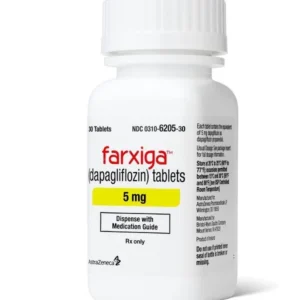
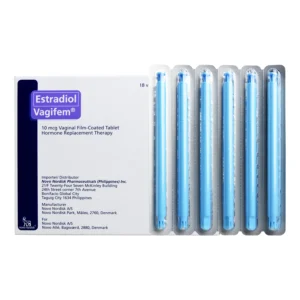
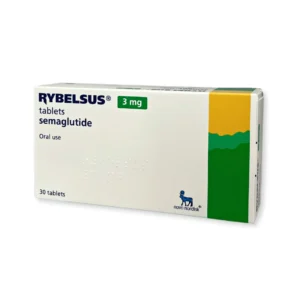



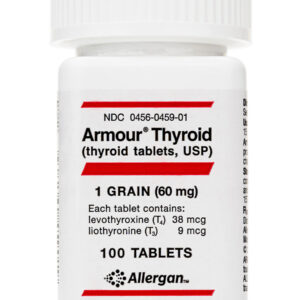

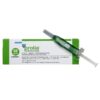
Reviews
There are no reviews yet.